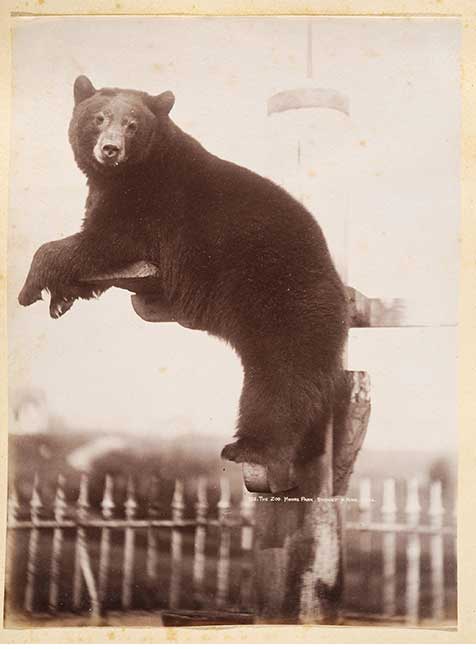Albumen Prints. The albumen print, also called albumen silver print, was published in January 1847 by Louis Désiré Blanquart-Evrard, and was the first commercially exploitable method of producing a photographic print on a paper base from a negative. It used the albumen found in egg whites to bind the photographic chemicals to the paper and became the dominant form of photographic positives from 1855 to the start of the 20th century, with a peak in the 1860-90 period. During the mid-19th century, the carte de visite became one of the more popular uses of the albumen method. In the 19th century, E. & H. T. Anthony & Company were the largest makers and distributors of the Albumen photographic prints and paper in the United States. Reference: Wikipedia
 Photograph of a bear in the zoological graden
Photograph of a bear in the zoological graden
null by 1880-1890
This photograph is one of 147 albumen prints made by some of the most significant photographers who worked in New South Wales during the 19th century. Most of the views are of places and buildings which played a role in the development of Sydney as a city. Some have become tourist destinations while others have been supplanted or been demolished as part of city expansion over the 20th and 21st centuries. These photographs are important reminders of the way Sydney has changed over the years since white settlement in 1788. Reference: Museum of Applied Art and Sciences